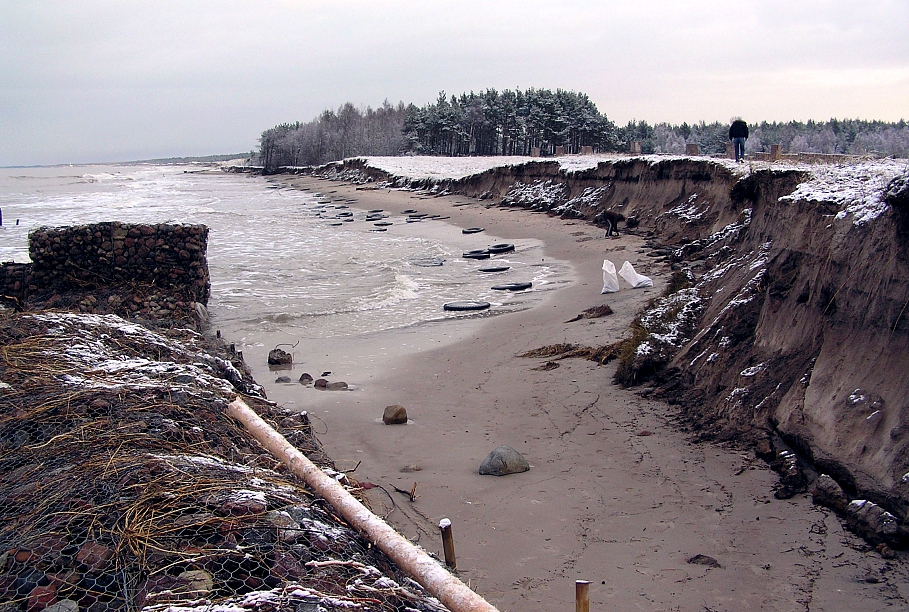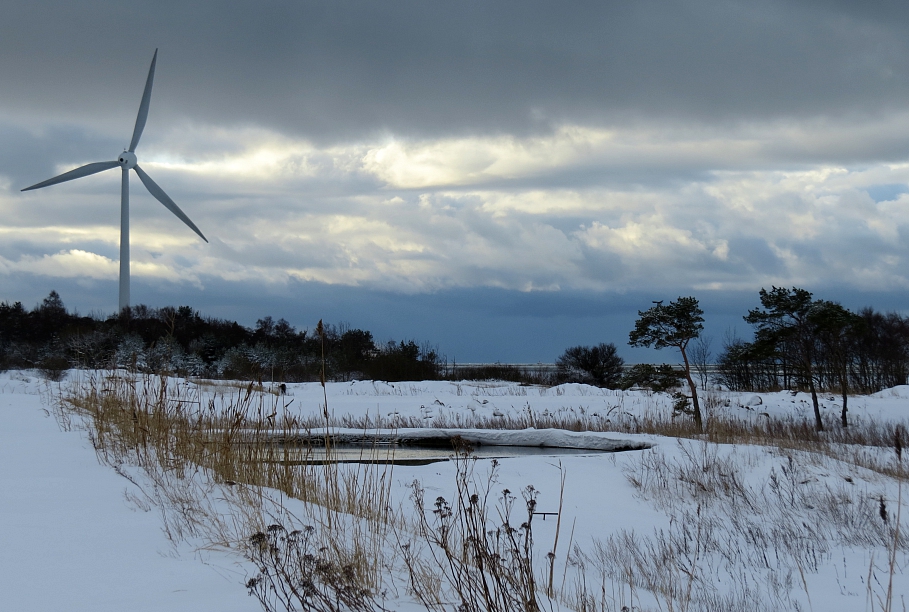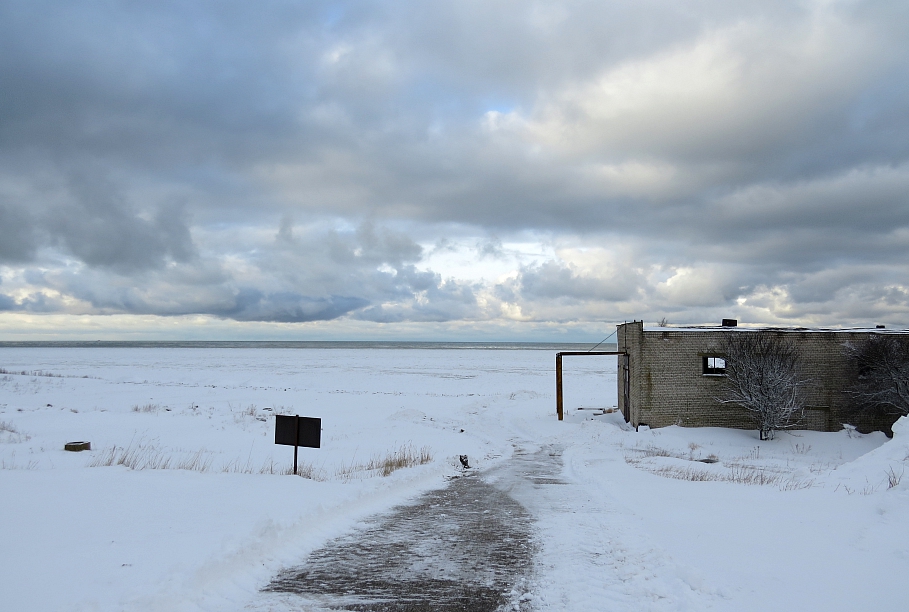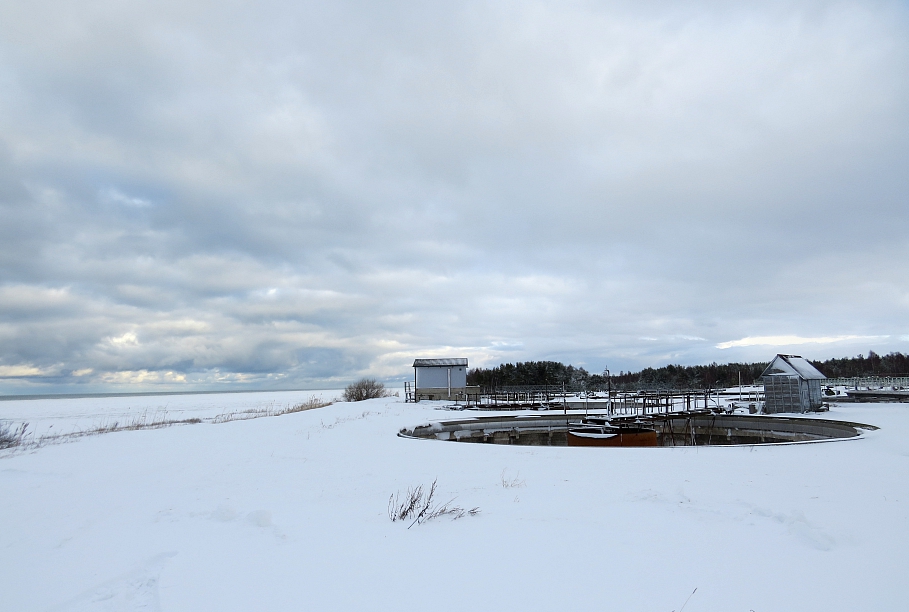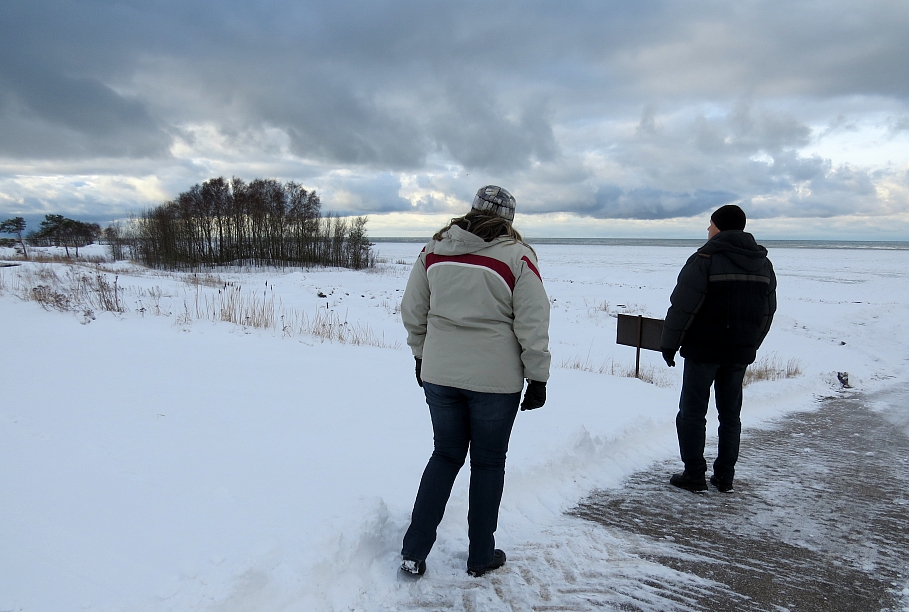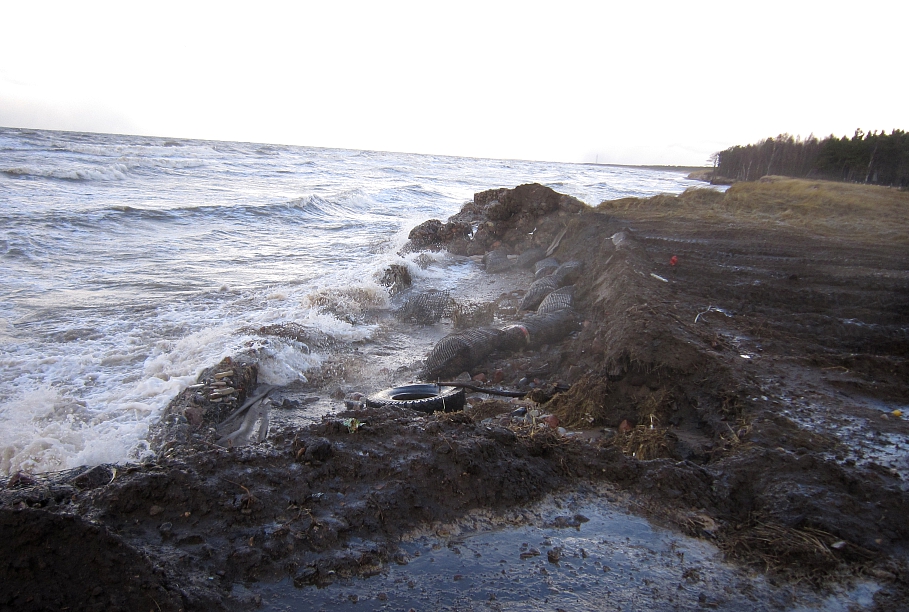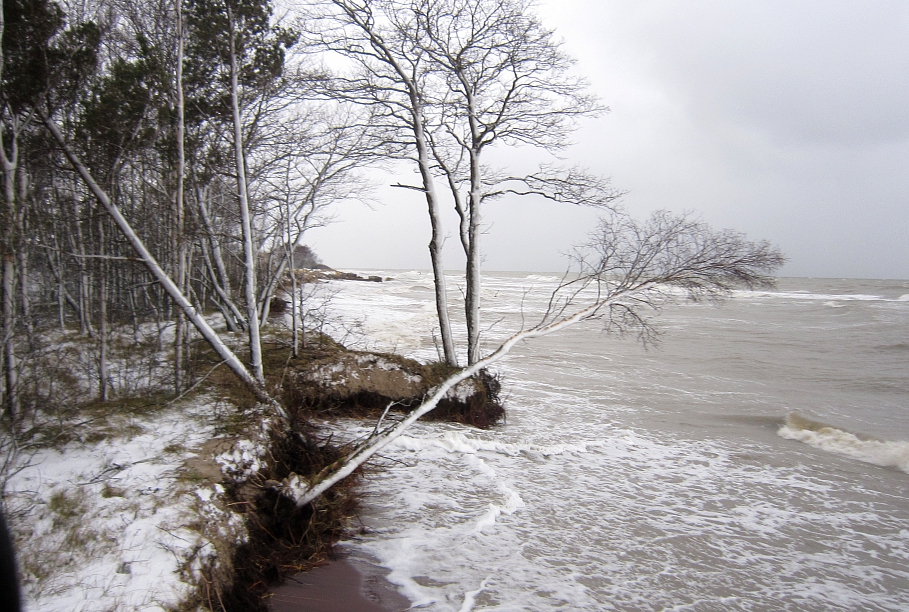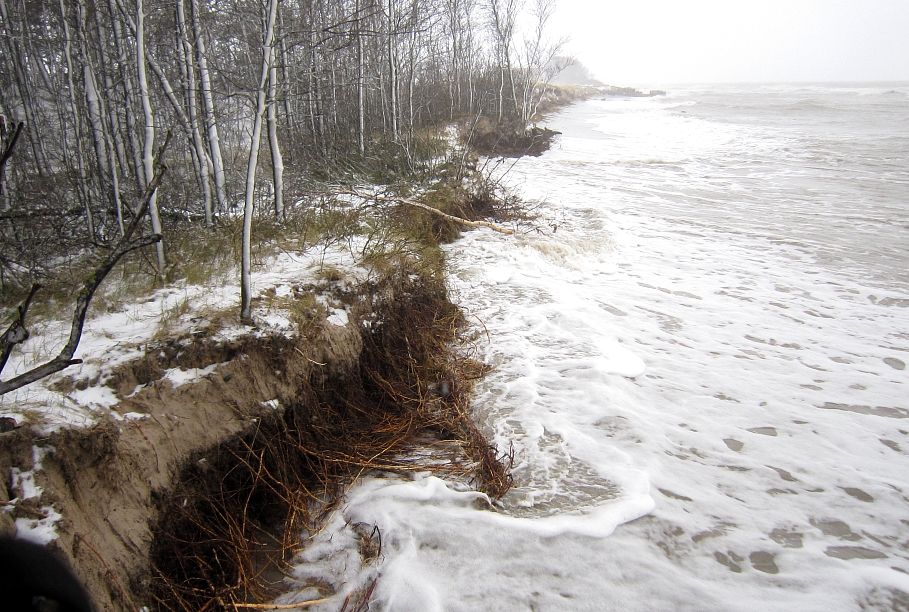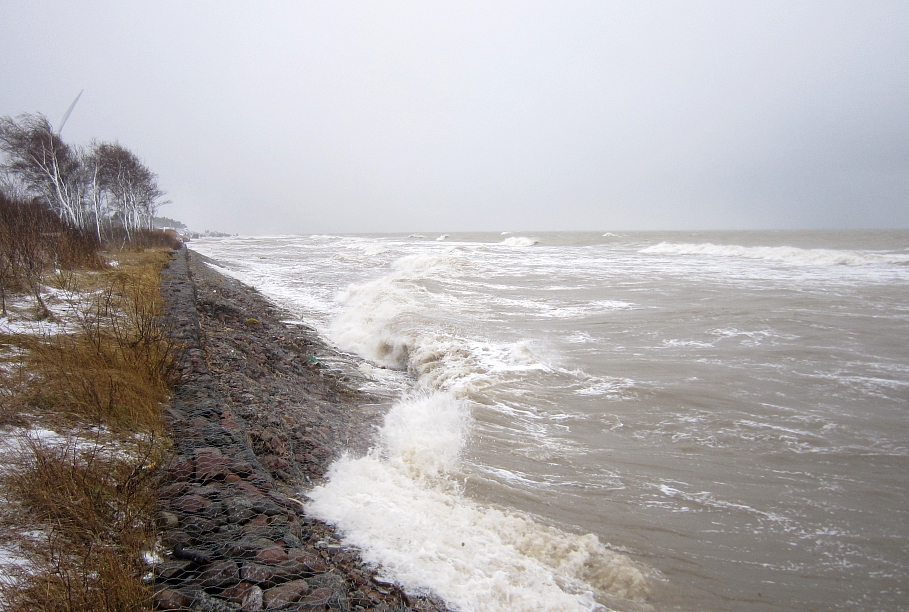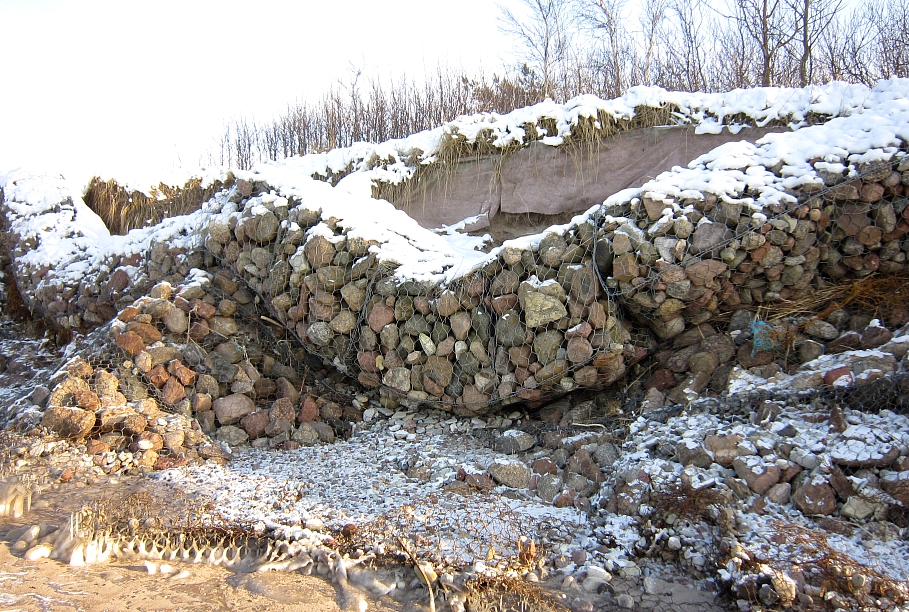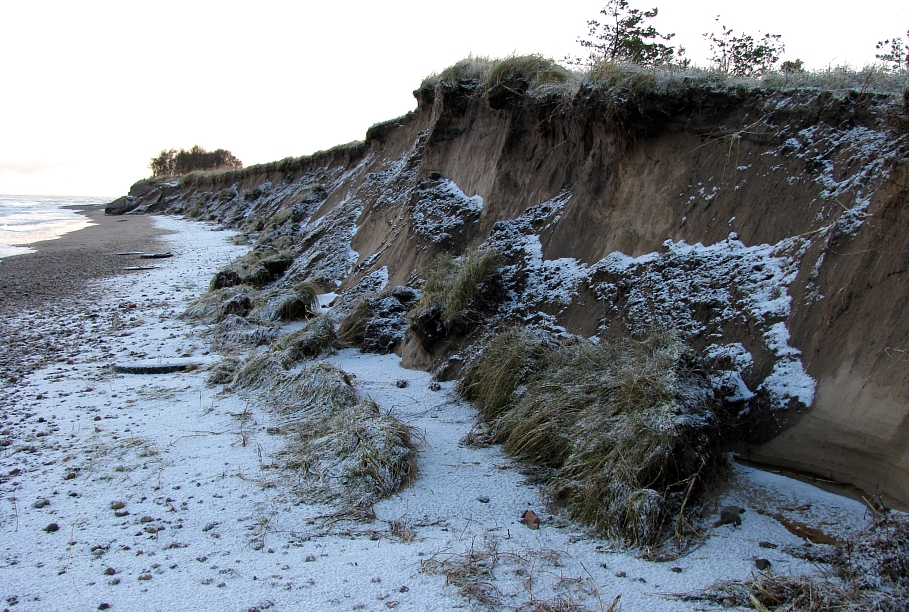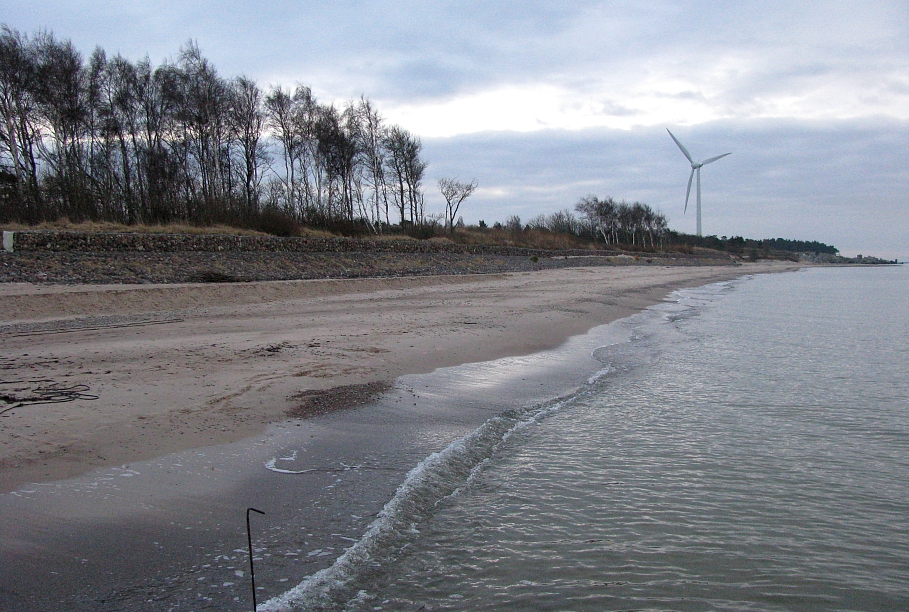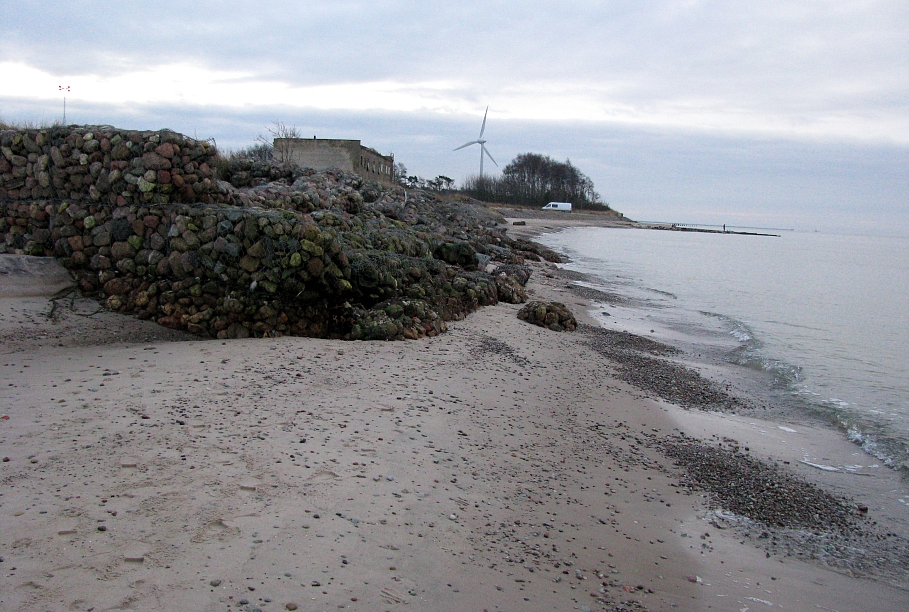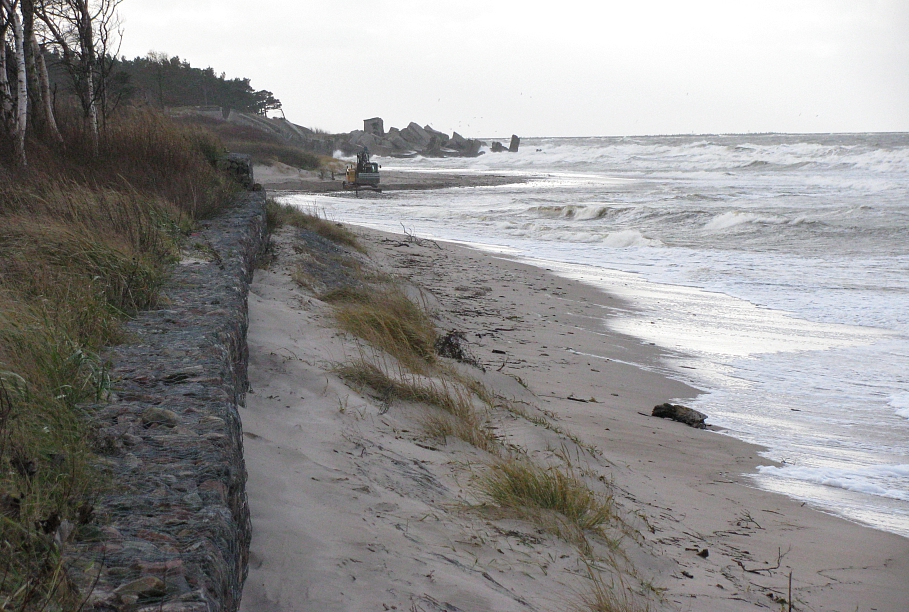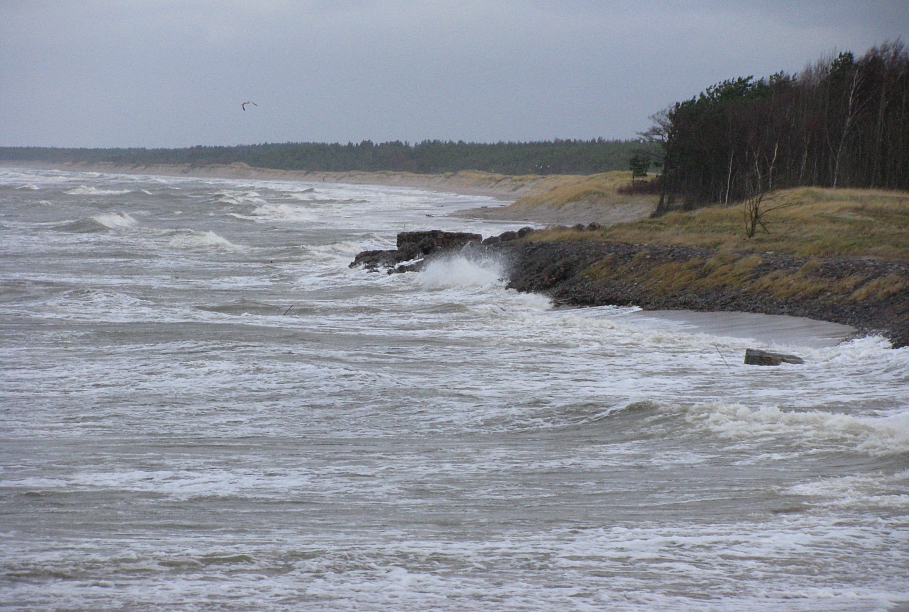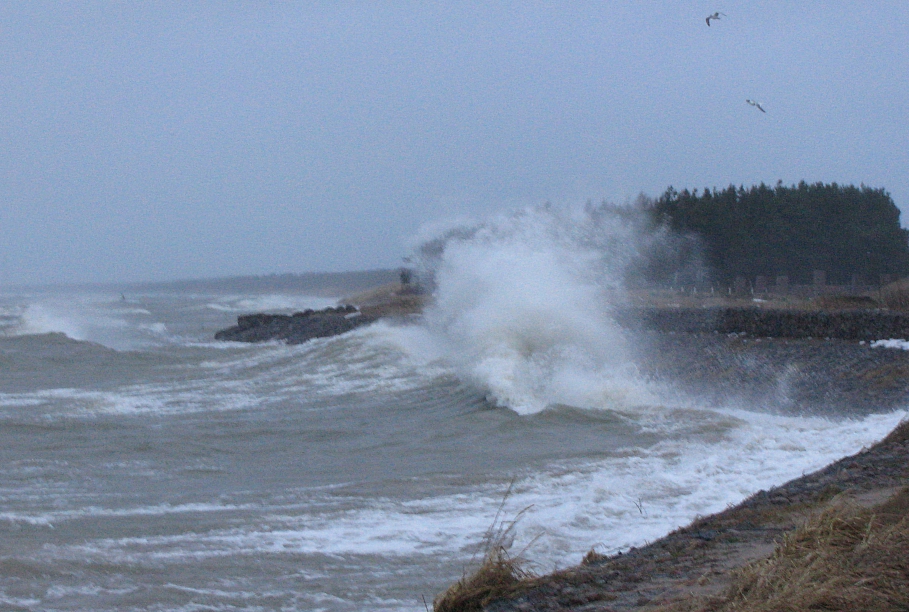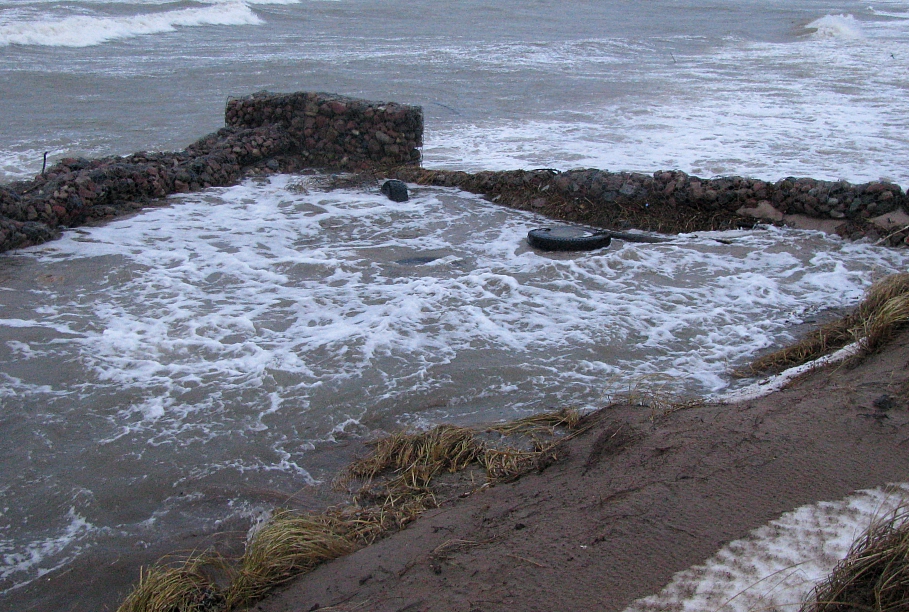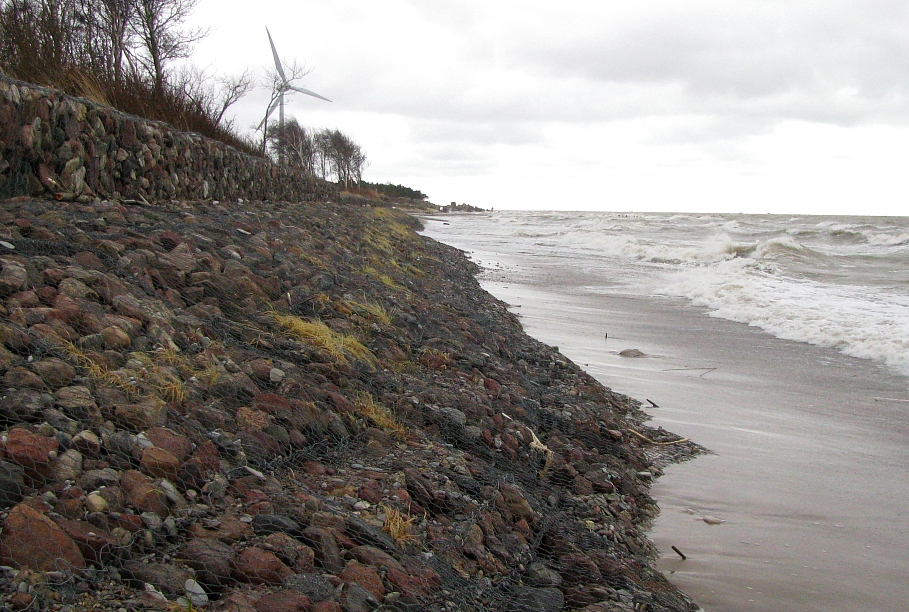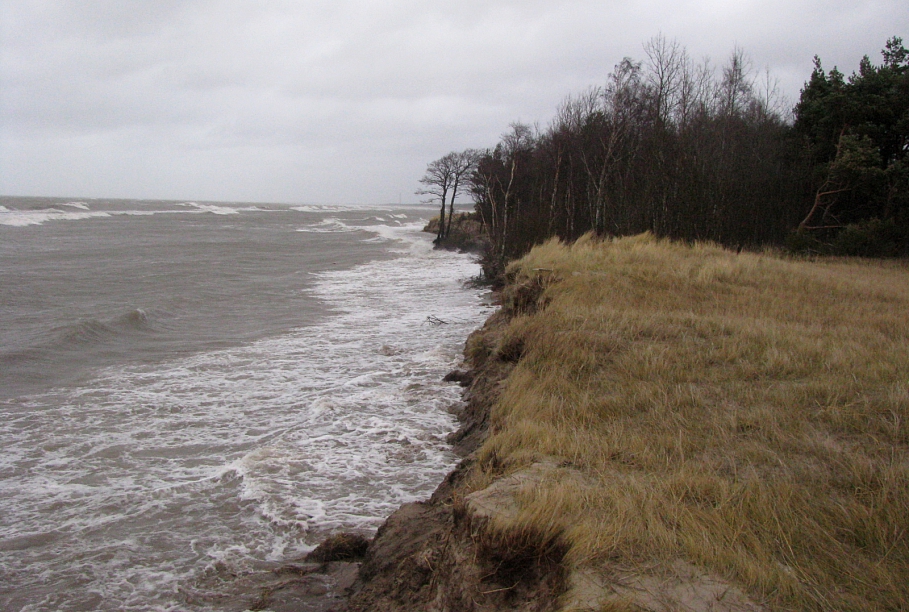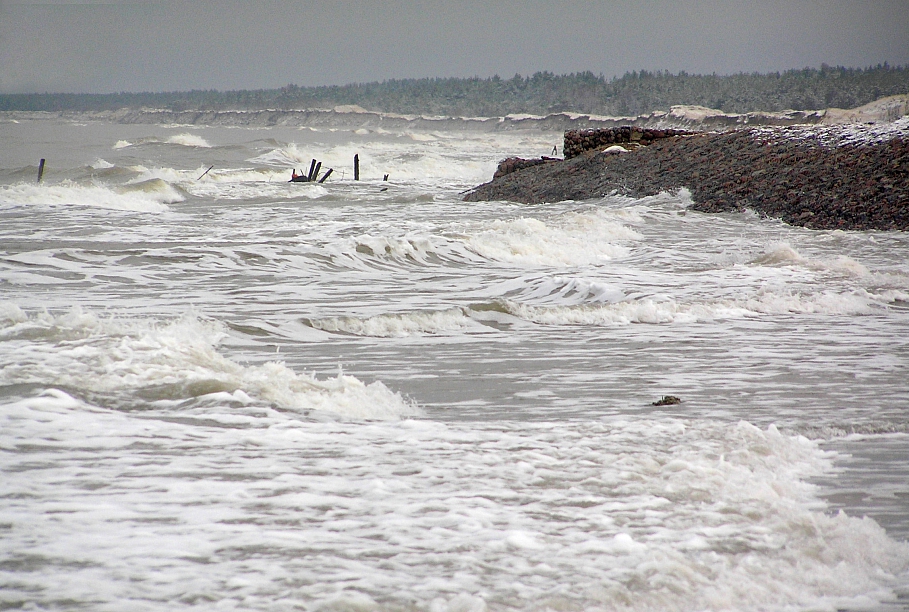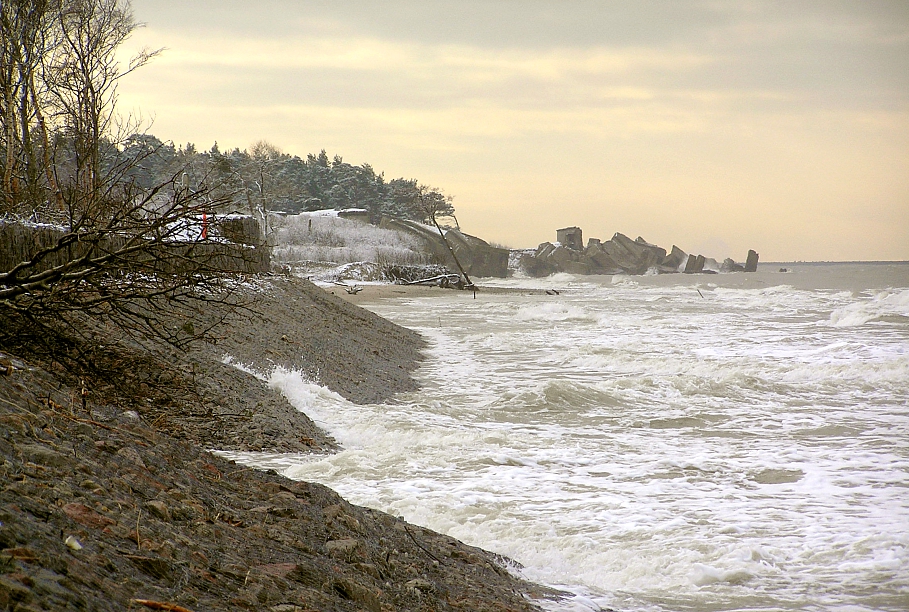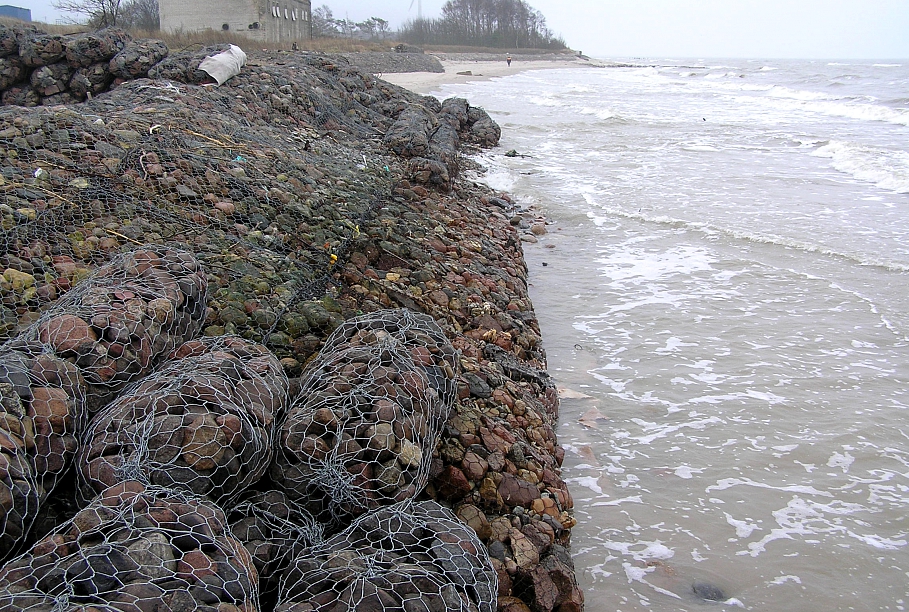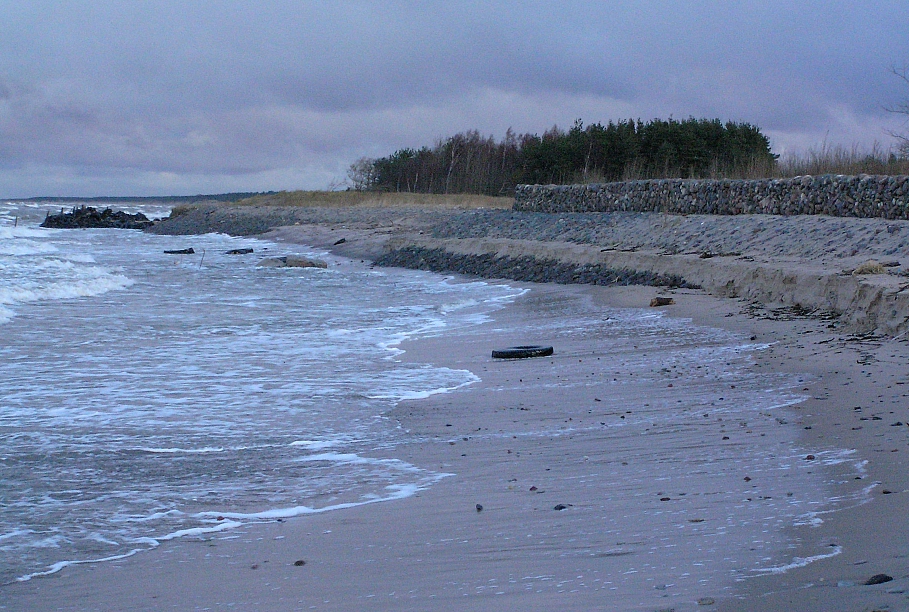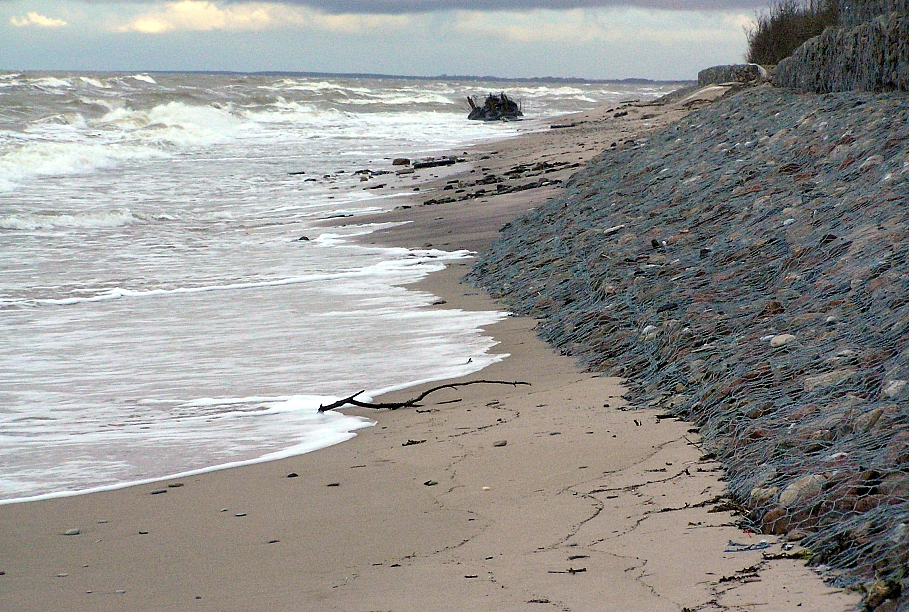Houses that only remain in photographs
Every storm causes great distress to the people living in the coastal regions. Latvian Radio often had to look back in the past to understand what happened with the Latvian coastland. It's the same in many places - sand ladders are washed down from the dunes, uprooted pines lie on the ground.
"At one time my ancestors owned about a hectare [10,000 m2] of land. Now it's in the sea. When I was a child I was weeding potatoes there. Some time ago I went to the seashore and thought - if the ugly boulders weren't put on the shore, the house would have been swallowed by the sea," Aivars from the Bernāti village said after the disastrous 2012 storm.
During the seventy-plus years of his life, the coastal line has receded for 250 or perhaps 300 meters. Together with the coast the history of Bernāti has gone underwater too.
The lone house on the Bernāti coast towers like a cliff. It was fortified by its owners as otherwise it would have been washed into the sea like the neighbors' houses, which can only be seen in photos and heard of in the locals' stories. Some of the photos can be seen at the Nīca repository of antiques.
"I remember that the casket that had washed ashore was very impressive. Every house at the time had a temporary casket. When a person died he was put inside one," Andris Maisiņš, a local of the Nīca region told Latvian Radio.
Parts of it grow back
On the average the sea chips away a meter of the coast line within a year at Bernāti, but during the December 1999 storm the sea swallowed 35 meters of coastland. In Jūrkalne and other locations a fierce storm can wash away anywhere from 5 to 15 meters.
The total length of the Latvian coastline is about 490 kilometers, and about 60 km of it are subject to erosion.
"In principle, coastal erosion is possible anywhere on the Latvian coastline, the whole 490 kilometers. It happens rarely or during fierce storms. If you can say so, the coastline keeps growing back.
Even if something is washed away, the dune renews a few years afterwards, and the 50—60 kilometers where it doesn't happen at all lie north of the two large ports; by Jūrkalne, and in parts of the Bay of Riga," said Jānis Lapinskis, researcher at the Latvian University's Faculty of Geography and Earth Sciences.
Man-made structures affect the coastline too
Lapinskis said that the last ice age grew the land territory of Latvia.
Things have changed nowadays as climate change isn't the only thing that affects erosion. Protective structures of the ports promote the erosion of the coastline as well.
"The port of Liepāja is the obstacle that prevents sand from reaching the north and to add to the sand collection at Šķēde and elsewhere. It aggravates the problem of coastal erosion. Of course it's not the only cause for it. The coast was eroding before the Liepāja port was built, especially at the stretch where the Liepāja wastewater treatment plants lie," the researcher said.
The sea reaches towards the treatment facilities
When the wastewater treatment equipment was set up in the 70s, no one could have thought that the land would disappear so quickly, Vilmārs Bogovičs, a manager at the plant, told Latvian Radio. The equipment was a few hundred meters away from the sea back then. On the average, the coast is losing four meters of land within a year.
"It was particularly harsh after the storms of 2005, 2007, and 2012 too when the current gabion - a coastal reinforcement - was destroyed. The first coastal armor was made in the Soviet era using car tires. The sea washed it all away from 1995 to 1997. In 2005 they started making the coastal reinforcement from gabions, but the sea wasted it away in time as well," said Bogovičs.
At the moment everything is frozen, and the voice of the sea can be heard only in the distance. A protective barrier goes on for some five hundred meters on the coast. At the moment the coast is protected - this winter frazil ice reaches some few hundred meters within the sea, while in warm winters the sea is much more formidable, said Vilmārs, who has been working in the wastewater treatment facilities at Liepāja for 20 years now.
There are plans of building a 500-meter breakwater north of the plants to combat erosion, Sandra Dejus, a representative of the Liepāja water utility Liepājas ūdens told Latvian Radio. As of now they are preparing an application to receive EU funds, with construction planned to start in 2017 or 2018.
There is less and less of Latvia each year
The last eight years have been rather peaceful in terms of how much the sea has worn away from the territory of Latvia, Jānis Lapinskis told Latvian Radio.
The latest data - still not fully summarized - show that the territory of Latvia has shrunk for four to five hectares in 2015.
"The data we have for a 25-year period shows that coastal erosion is increasing. The activity is greater than the 20th century average, but we can only judge [what happened in] the 20th century by old maps. There are maps from the 30s of the last century. They can be used to establish how much the coastline has receded during the 20th century," Lapinskis said.
On average, the territory of Latvia shrinks some five to ten hectares a year. Lapinskis said that fighting this process isn't necessary as involvement will cause coastal erosion elsewhere. The Liepāja wastewater treatment plants are an exception.
But at the moment it's winter outside, and the layer of ice provides the coastline with some much-needed protection from the sea.
